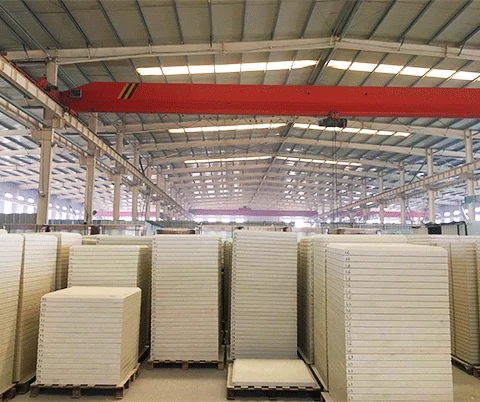loading...
- No. 9, Xingyuan South Street, Dongwaihuan Road, Zaoqiang County, Hengshui, Hebei, China
- admin@zjcomposites.com
- +86 15097380338
- Welcome to visit our website!
frp pultruded profiles
The Advantages of FRP Pultruded Profiles
Fiber Reinforced Polymer (FRP) pultruded profiles have gained significant traction in various industries due to their unique properties and benefits. The pultrusion process, which involves pulling continuous fibers through a resin bath and then through a heated die to form a rigid shape, results in lightweight, corrosion-resistant materials that can outperform traditional materials such as steel and aluminum. Here, we explore the advantages of FRP pultruded profiles and their applications across different sectors.
1. Lightweight and High Strength
One of the most compelling features of FRP pultruded profiles is their lightweight nature. They are typically less dense than metals, which reduces transportation costs and makes them easier to handle and install. Despite their lightweight, these profiles boast high tensile strength and rigidity. This combination allows for the development of structures that require less material without sacrificing performance, making them an attractive option for construction and manufacturing applications.
2. Corrosion and Chemical Resistance
FRP materials are inherently resistant to corrosion, chemicals, and environmental degradation, making them suitable for use in harsh environments. They do not rust, rot, or corrode like traditional metals, which can be particularly beneficial in industries such as marine, wastewater treatment, and chemical processing. This resistance extends the lifespan of FRP products and reduces maintenance costs, further enhancing their value in long-term investments.
3. Design Flexibility
frp pultruded profiles

The pultrusion process allows for the creation of a wide range of shapes and sizes, enabling customization to meet specific project requirements. This versatility is essential for architects and engineers who need tailored solutions for unique designs. The ability to integrate reinforcing fibers and customize resin formulations also allows for optimized performance based on the intended application, whether that be structural components or aesthetic finishes.
4. Sustainability
FRP pultruded profiles contribute to sustainable building practices. They require less energy to produce compared to traditional materials, and the recyclability of fiber-reinforced composites further enhances their eco-friendliness. As industries seek to minimize their environmental impact, FRP solutions provide a promising direction toward greener construction and manufacturing practices.
5. Thermal and Electrical Insulation
Another advantage of FRP profiles is their excellent thermal and electrical insulation properties. Unlike metals, FRP does not conduct electricity, making it an ideal choice for electrical applications and environments where safety from electric shock is crucial. Additionally, their low thermal conductivity can aid in energy efficiency in various applications, reducing overall energy costs.
Conclusion
In summary, FRP pultruded profiles present a multitude of advantages that make them an attractive alternative to traditional materials in construction and other industries. Their lightweight, strength, corrosion resistance, design flexibility, sustainability, and insulation properties position them as a forward-thinking choice for future projects. As technology advances and more industries recognize the benefits of FRP, it is likely that the use of pultruded profiles will continue to grow, paving the way for innovative and sustainable solutions in various applications.
-
The Rise of FRP Profiles: Strong, Lightweight, and Built to LastNewsJul.14,2025
-
SMC Panel Tanks: A Modern Water Storage Solution for All EnvironmentsNewsJul.14,2025
-
GRP Grating: A Modern Solution for Safe and Durable Access SystemsNewsJul.14,2025
-
Galvanized Steel Water Tanks: Durable, Reliable, and Ready for UseNewsJul.14,2025
-
FRP Mini Mesh Grating: The Safer, Smarter Flooring SolutionNewsJul.14,2025
-
Exploring FRP Vessels: Durable Solutions for Modern Fluid HandlingNewsJul.14,2025
-
GRP Structures: The Future of Lightweight, High-Performance EngineeringNewsJun.20,2025
